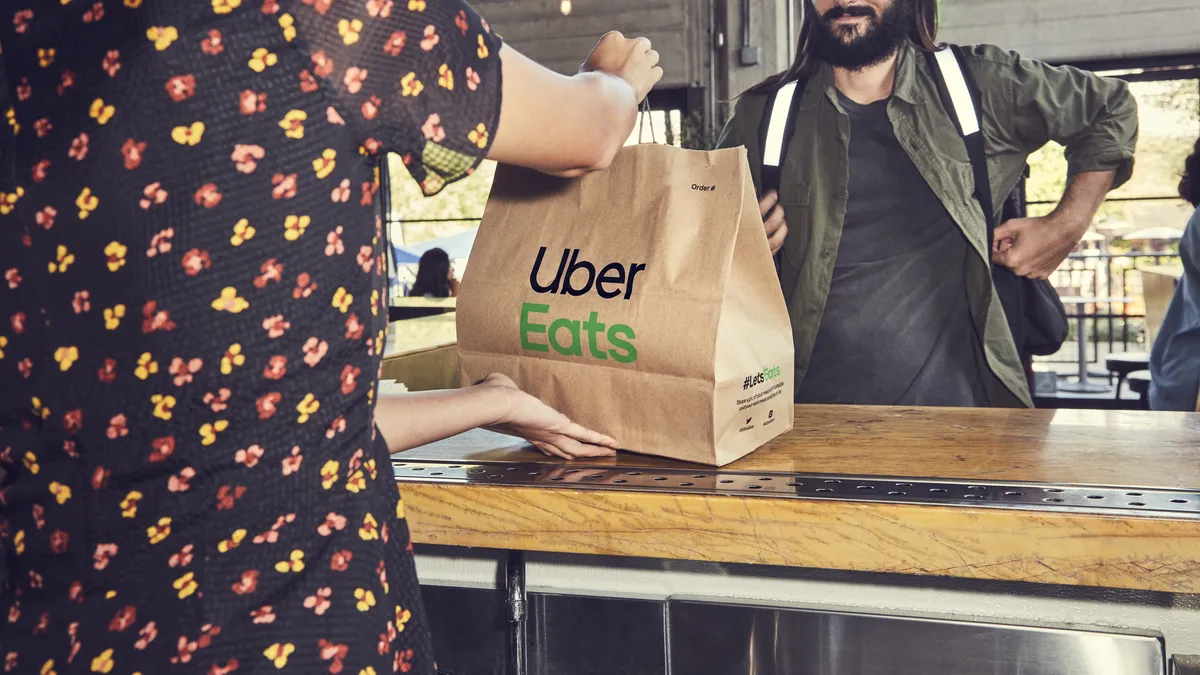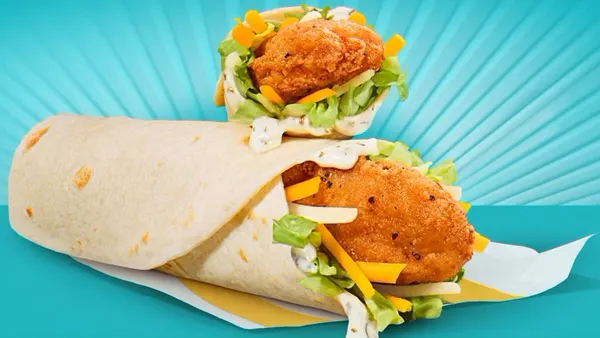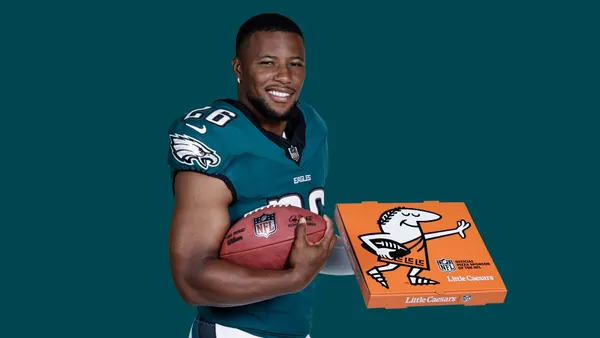Dive Brief:
- Third-party delivery saw the most rapid increase in restaurant sales (as a percentage of overall sales) since the beginning of the novel coronavirus pandemic and has doubled during the crisis, according to a survey of more than 400 restaurants by Uber Eats and Technomic. All those surveyed partnered with Uber Eats in June. Ninety-two percent of operators reported using third-party delivery after March 15, a 27% increase prior to COVID-19, per the white paper emailed to Restaurant Dive. Eighty-four percent of operators said that delivery platforms have allowed them to access diners they would not have been able to reach otherwise.
- Eighty-one percent of survey respondents said third-party delivery helped them avoid laying off employees, while 79% said it helped them avoid reducing worker hours. Ninety-two percent of restaurant operators said they plan to continue working with third-party delivery platforms beyond the COVID-19 crisis, including 88% of those that joined recently.
- Seventy-two percent of operators have experienced an increase in third-party sales since March 15, and average check sizes have grown 69% since then.
Dive Insight:
Third-party delivery has been a lightning rod for the restaurant industry long before the pandemic took root in the U.S., but this survey's findings show that there have been real benefits for operators that have outsourced their off-premise channels during this time.
Still, the risks are high. Third-party delivery commission rates, which generally hover between 20% to 30%, could gut anemic restaurant sales amid dining room closures. And though municipalities across the country have passed delivery fee caps to ensure independent restaurants don't lose too much off the top of their sales during this economic downturn, critics of third-party delivery still point to a lack of direct control over the delivery channel as reason enough to be wary of these platforms.
DoorDash, for example, recently came under fire for continuing to charge 30% commission fees to some San Francisco restaurants despite the city's cap of 15%, which was enacted in April. DoorDash said the error impacted less than 10 restaurant partners and that it will reimburse those operators. Grubhub also violated San Francisco's policy, and Postmates broke Washington, D.C.'s third-party delivery cap rules as well. These situations reflect the fears of restaurants that are critical of third-party delivery as a concept: even when companies and local governments pledge to do right by restaurants, operators are often the party that get the short end of the stick when things go wrong.
But if third-party delivery is generating enough sales to help restaurants avoid layoffs and shift reductions, as Uber Eats and Technomic's survey results show, the segment may be a necessary lifeline for restaurants during this time. What's more interesting, however, is the fact that 92% of respondents plan to continue their third-party delivery partnerships after COVID-19 ends. The restaurant landscape could see further changes post-pandemic that could influence this sentiment, however. For example, city delivery commission fee caps may be phased out once the industry reaches a "new normal" and diners are able to eat inside restaurants once again with reduced or no social distancing.
Evolving diner behavior could also change restaurant reliance on delivery, both now and in the future. Since the start of the pandemic, diners have increasingly ordered takeout rather than delivery, according to Upserve sales data shared with Restaurant Dive via email. In February, delivery accounted for 32% of Upserve Online Ordering sales, but made up only 14% of transactions as of April 20. Generally, it's easier for restaurants to get online with pickup channels rather than delivery, and the channel allows restaurants to maintain off-premise autonomy and consumers to avoid hefty delivery fees — which could make this off-premise option increasingly attractive for restaurants in the coming months.













